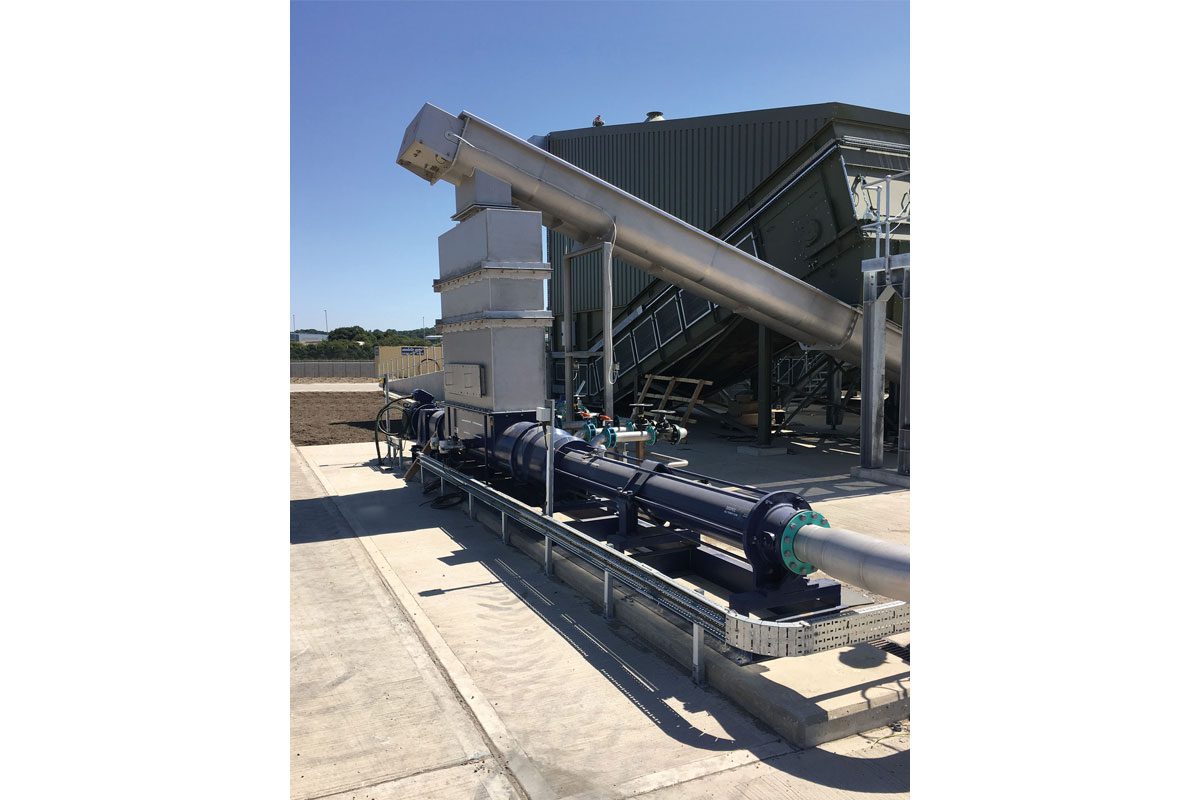Pump specialist Seepex describes a case study where large open hopper PC pumps were installed in a wastewater plant, providing a cost-effective alternative to the way back-mixing is normally conducted, and one that makes less of a demand on pumping and storage resources.

Yorkshire Water Knostrop is a large wastewater treatment plant servicing a population of 800,000 people. The works was recently rebuilt with standard digestion and a Combined Heat and Power (CHP) plant. The facility processes indigenous sludge and imported dewatered sludge cake.
SEEPEX had previously installed 12 large progressive cavity pumps on the site, pumping sludges to an incinerator which had come to the end of its asset life. Over many years these pumps had proven to be reliable, and SEEPEX had built a well-established relationship with both the end user and their logistics hub.
Extreme conditions
Knostrop is a sludge treatment centre that not only produces indigenous sludge but also receives five daily loads of dewatered sludge by truck five days a week from satellite sites in West and North Yorkshire. At the outset of this project, each load had to be processed in under an hour to prevent vehicle backup.
The application required a pump to receive imported dewatered sludge from a large reception belt facility and process 28 tonnes of 30% DS cake with high grit and rag content into a 6% DS homogenous mixture.
The resultant total volume after mixing was 150m3/h which was then fed to the digesters. The pump had to run up to eight hours a day, achieve a constant dry solids mix and operate reliably under these extreme conditions.
Optimising digestion
SEEPEX calculated the total pumped volume of sludge cake plus dilution liquid, using a combination of application experience, pump selection software and algorithms. Choosing the correct amount of dilution/side stream liquid to thin the cake is important to achieve the 6% DS required to optimise digestion.
Developers selected two large TVE open hopper pumps with an auger feed screw, and these are fed from the imported sludge reception facility. Each pump is designed to handle a capacity of 150m3/h of back-mixed sludge and to pump 30% DS dewatered sludge cake in the absence of dilution liquid.
They have achieved a homogenous mix within the pump hopper with the help of the auger feed screw and appropriately positioned dilution connections. A 6% DS mixture is delivered by monitoring the pump’s speed and discharge pressure, and controlling the amount of dilution liquid being added to the pump hopper.
To make maintenance easier, the pump has been fitted with rotor joint access (RJA) which means its compression zone can be moved over the stator. This makes it possible to access the rotor universal joint and to remove debris without extensive maintenance work, e.g. withouth the need to remove pipework and the pump’s stator.
Operation and service life
Since their installation in June 2018, the pumps have performed as per the predicted KPIs related to parameters such as flow, pressure, speed, kW and amps. The processed sludge is pumped without interruption. And there has been no reported failure or performance drop. The removable compression zone significantly reduces downtime as blockages caused by large debris can be removed and the pump put back in operation within hours without dismantling the pump and extensive downtime.
The solution delivered by SEEPEX is a more cost-effective alternative to the traditional multi-step back mixing approach which would involve further tank storage, additional pumps and blending.






